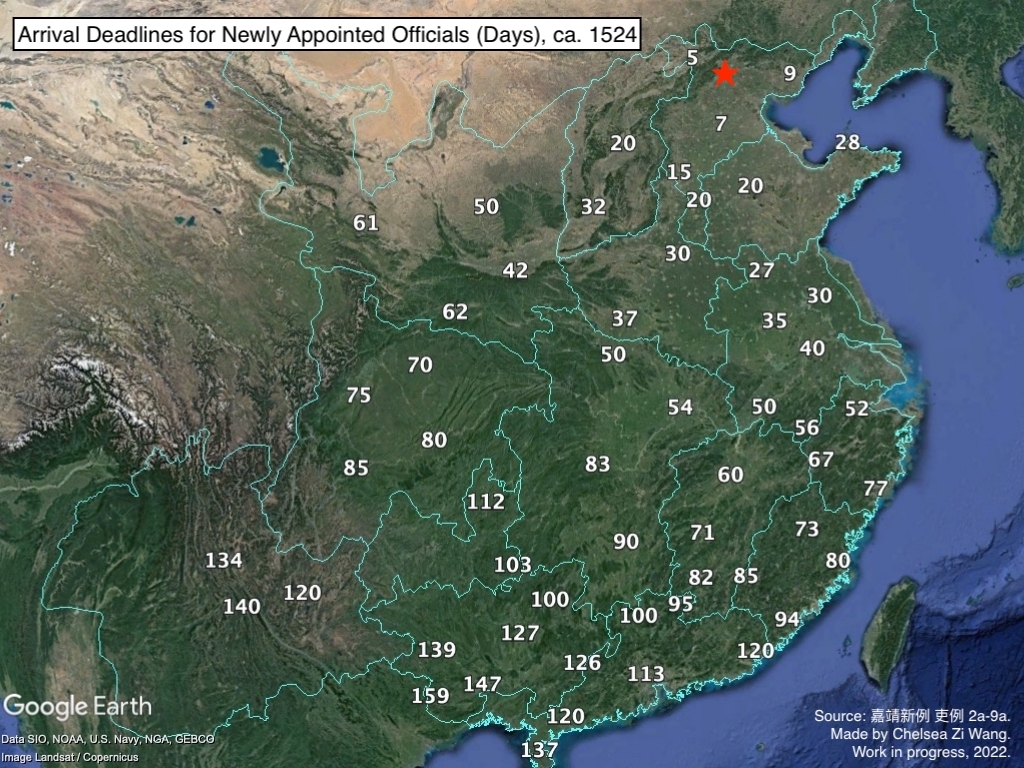Episodes

Sunday Aug 21, 2022
Sunday Aug 21, 2022
China has a long bureaucratic history and tradition, and the Ming Dynasty (1368-1644) was no exception. The Ming was one of the largest empires in the world at the time and it established a large and complex bureaucracy to govern it. In this episode, Professor. Chelsea Wang talks to us about some of the bureaucratic practices, which might seem strange to us today, that the Ming employed to keep the empire running.
Governing China is a new series that explores the various bureaucratic institutions and administrative policies that the various Chinese dynasties employed to govern their empires.
Contributors
Chelsea Wang

Professor Chelsea Wang is an Assistant Professor of History at Claremont McKenna College. As a historian of late imperial China, Professor Wang’s research focuses on the intersection between communication and governance in premodern empires. Her current manuscript project is titled Logistics of Empire: Governance and Spatial Friction in Ming China, 1368-1644, and it examines how the Ming dynasty maintained control over its vast territories using certain administrative practices that modern observers often find counterintuitive and strange.
Yiming Ha

Yiming Ha is a Ph.D. candidate in the Department of History at the University of California, Los Angeles. His current research is on military mobilization and state-building in China between the thirteenth and seventeenth centuries, focusing on how military institutions changed over time, how the state responded to these changes, the disconnect between the center and localities, and the broader implications that the military had on the state. His project highlights in particular the role of the Mongol Yuan in introducing an alternative form of military mobilization that radically transformed the Chinese state. He is also interested in military history, nomadic history, comparative Eurasian state-building, and the history of maritime interactions in early modern East Asia. He received his BA from UCLA and his MPhil from the Hong Kong University of Science and Technology.
Credits
Episode No. 14
Release date: August 21, 2022
Recording location: Vancouver, Canada/Los Angeles, CA
Bibliography courtesy of Professor Wang
Images

Cover Image: Section of a Ming officials' handbook showing a map of territorial government offices in
Zhejiang province (Image Courtesy of Harvard-Yenching Library's Digital Collections)

Structure of the Ming bureaucracy (Image Source)

Conceptual map of the Ming territorial bureaucracy (Image by Professor Wang)

Deadlines for newly appointed officials to arrive at their locations of service. The red star indicates the location of Beijing, the imperial capital (Image by Professor Wang. Please do not cite or circulate without permission)

A memorial reproduced in a Ming literary collection. This memorial, written by the controversial Grand Secretary Zhang Juzheng and addressed to the Wanli emperor, contains information about Zhang's speed of travel when he returned to Huguang province to bury his recently deceased father (Image Courtesy of Harvard-Yenching Library's Digital Collections)

Section of a Ming officials' handbook showing information about individual administrative units in Zhejiang province. The text contains information about each prefecture's tax quota, subordinate counties, distance from Beijing, and arrival deadlines for officials traveling from Beijing (Image Courtesy of Harvard-Yenching Library's Digital Collections)
References
Dardess, John W. Ming China, 1368-1644: A Concise History of a Resilient Empire. Lanham: Rowman & Littlefield, 2012.
Guo Hong 郭红 and Jin Runcheng 靳润成. Zhongguo xingzheng quhua tongshi: Mingdai Juan 中国行政区划通史: 明代卷. Shanghai: Fudan daxue chubanshe, 2007.
Hucker, Charles O. “Governmental Organization of the Ming Dynasty.” Harvard Journal of Asiatic Studies 21 (1958): 1–66.
Nimick, Thomas G. Local Administration in Ming China: The Changing Role of Magistrates, Prefects, and Provincial Officials. Minneapolis: Society for Ming Studies, 2008.
Schneewind, Sarah. “Pavilions to Celebrate Honest Officials: An Authenticity Dilemma in Fifteenth-Century China.” Journal of the Economic and Social History of the Orient 65, no. 1-2 (2022): 164–213.
Shen Bin 申斌. “Mingdai Guanwenshu jiegou jiedu yu xingzheng liucheng fuyuan: yi Shandong jinghuilu de zuanxiu wei li” 明代官文书结构解读与行政流程复原—以《山东经会录》的纂修为例. Anhui shifan daxue xuebao: renwen shehui kexue ban 44, no. 6 (2016): 749–56.
Wang, Chelsea Zi. “Dilemmas of Empire: Movement, Communication, and Information Management in Ming China, 1368-1644,” PhD diss., Columbia University, 2017.
Yu Jindong 余劲东 and Zhou Zhongliang 周中梁. “Mingdai chaojin kaocha chengxian zhi yanjiu: yi Tongma bian wei zhongxin de tantao” 明代朝觐考察程限之研究——以《铜马编》为中心的探讨. Lishi jiaoxue wenti (2015): 26, 69–73.
Zhang, Ying. Confucian Image Politics: Masculine Morality in Seventeenth-Century China. Seattle: University of Washington Press, 2017.


No comments yet. Be the first to say something!